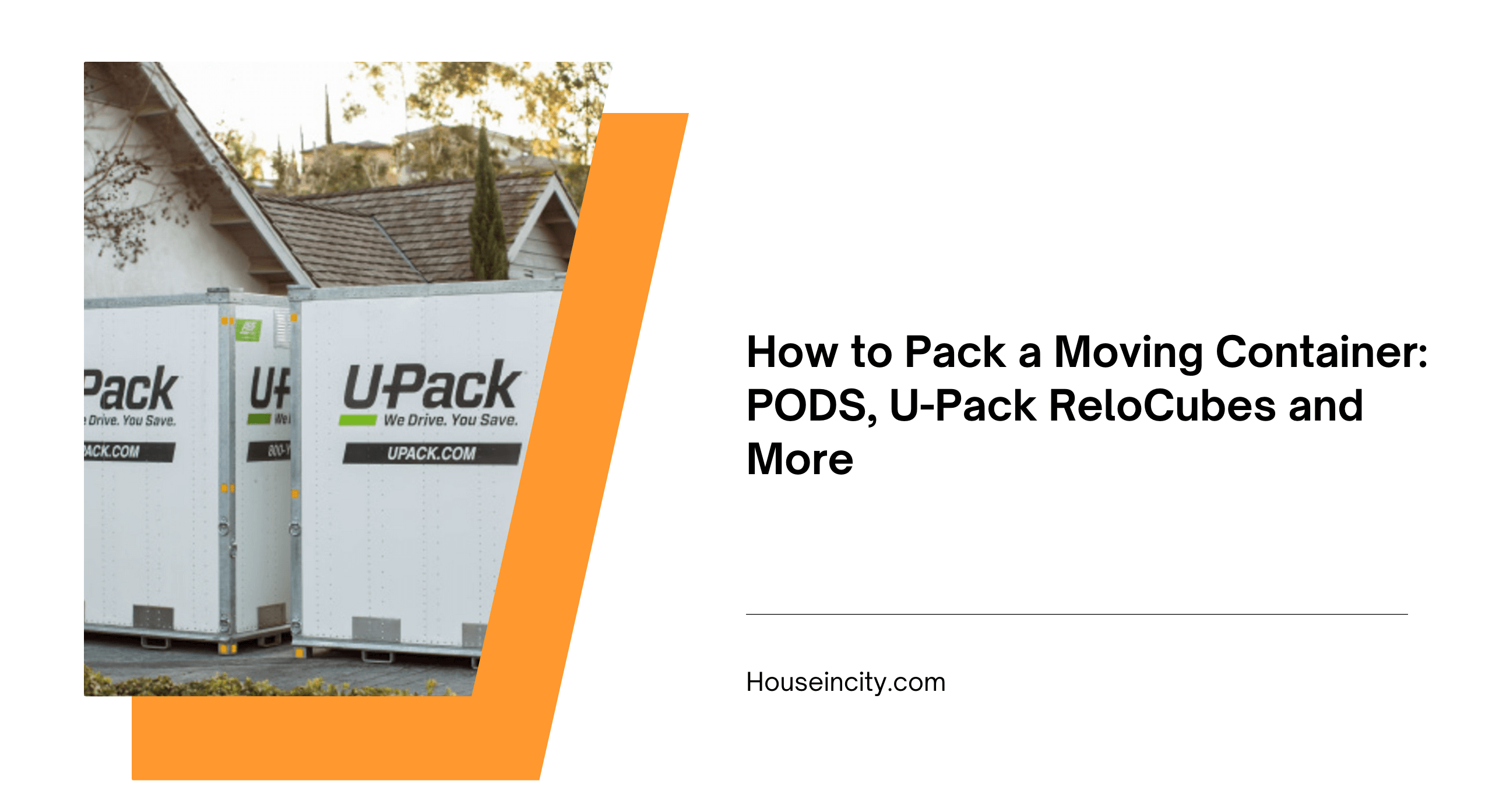Moving containers, such as PODS and U-Pack ReloCubes have become popular means of moving your household a over a long distance. The advantages to these moving strategies are numerous. For instance, unlike driving a rental truck, you don’t have to drive yourself and spend money on gas or motels. The companies that move your container are fast and reliable, and the cost you’ll pay for moving your container will usually end up being less than the total costs of renting a truck, paying for gas, and sleeping on the way to your destination. Plus, they ultimately will require less effort.
Many people, however, balk at the apparent small size of moving containers compared to all the furniture and items in their house. You might hear, “This won’t fit everything,” repeated again and again.
The truth is, you can fit more into a moving container than looks would indicate. All you need to do is use the space you have effectively.
Large items like couches can be stored inside moving containers facing any direction. For instance, if the container’s longest side is vertical, you can place the couch inside vertically. Items like futons and bed should be disassembled and every piece laid in flat, one on top of the other. Fragile items such as televisions should be packed in the center of the container, where they won’t slide. Cushions, pillows, and other soft items will compact easily, as well, so you can stuff them into other sections. Packaging fragile items like mirrors in between cushions will also help to protect them.
If you have oddly shaped items, for instance, cat trees, you might be able to disassemble them as well. If you are unable to, however, try to fill in the gaps of these pieces with smaller items, working your way from the largest items that will fit to the smallest ones that you have. Small items like clothing, shoes, and knickknacks can be shoved into nooks and crannies wherever available. Most fully loaded moving containers will still have empty spaces large enough for soft or small items.
Sometimes, a moving container loaded to full capacity has the tendency to deform, especially if placed on uneven ground. Moving containers are sturdy but will still move slightly when under load, and this can be troublesome when you are closing the doors. Moving containers can sometimes deform so much that the doorway opening is no longer even, resulting in doors that cannot reach their latches. This creates a troubling situation for many movers, who can’t decide how to face this problem and end up frantically removing items from their container in an effort to get the doors shut.
The simplest solution to shutting doors on a container that has deformed is to use a crowbar. This requires at least two persons to accomplish. One person must stand on a ladder at the top level of the doors. Find the door whose top edge is protruding above where it needs to be, and insert the crowbar between the top of the door and the inside of the container’s ceiling. Then pull downward. It takes a relatively small amount of effort to cause the container to reshape enough to allow the doors to close, and once the doors are shut and latched, they will provide the extra strength needed to maintain the container’s shape. While you are pushing down on the crowbar, have your partner below you shut and latch the doors.
Make sure to lock your moving container. Most moving containers have a space for your own padlocks. Also, it’s a good idea to snap a photograph of your container’s identification stickers before sending it on the road. This makes it easy to make sure that you have the correct container in case there’s been a mix-up.
